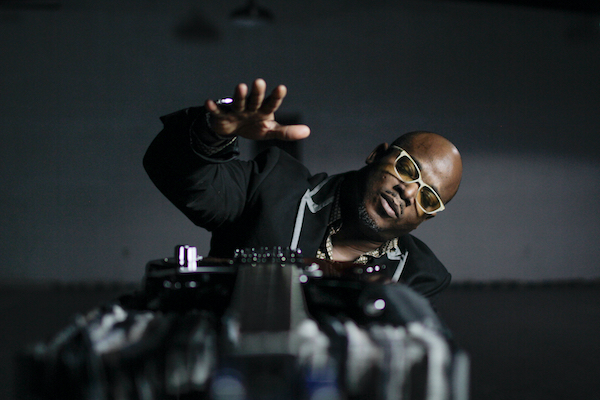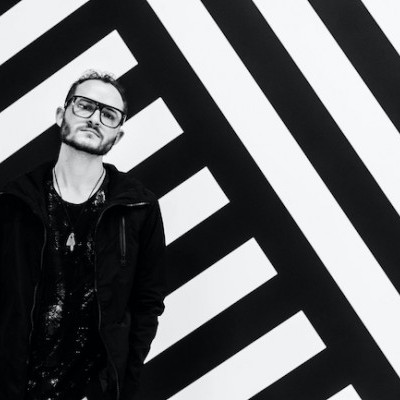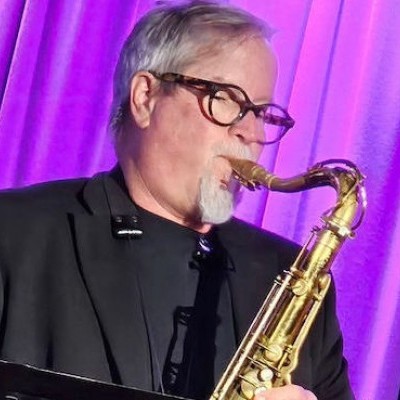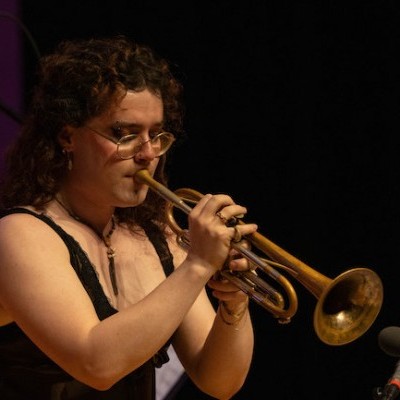Oct 28, 2025 10:47 AM
In Memoriam: Jack DeJohnette, 1942–2025
Jack DeJohnette, a bold and resourceful drummer and NEA Jazz Master who forged a unique vocabulary on the kit over his…

Bassist Tarus Mateen recorded Black Solo Sonets For Piano And Bass over the course of four years, during tours and various recording sessions.
(Photo: Marlon Hightower)In the late ’80s, Tarus Mateen landed a plum gig: backing up vocalist Betty Carter. Barely into his 20s at the time, the bassist found himself touring Europe and Asia as part of an ensemble that included trumpeter Freddie Hubbard and drummer Greg Hutchinson.
To cut travel costs, Mateen decided to leave his upright bass at home, and rent or borrow one at every stop on their tour. A sensible move financially, but one that caused him all manner of headaches as he had to wrestle each individual instrument to meet his personal style and sound. At one tour stop, Mateen was complaining about the situation to his bandmates when Carter stopped him short.
“We were sitting at the dinner table,” the now 53-year-old musician remembers, with a laugh, “and she was just tearing into me. ‘It’s not the bass. It’s the bass player, Mateen.’ I felt like, ‘Oh man, I should have just kept my mouth shut.’”
Mateen has let that pithy maxim serve as a guiding principle throughout a varied career that has found him recording with Terence Blanchard, Goodie Mob, and working with pianist/composer Jason Moran for about 20 years. In Mateen’s view, it also serves as the core concept behind his second solo album, Black Solo Sonets For Piano And Bass.
Recorded over the course of four years, during tours and recording sessions with Moran’s ensemble Bandwagon, the self-released collection features improvisations by Mateen, mostly on piano, captured on his smartphone. Befitting the experience of touring, the sound and feel of this experimental album changes from track to track, depending on what keyboard is being used. But true to Carter’s words about it being all about the player and not the instrument, the spirit of the music remains consistent throughout.
Mateen approaches the piano with a freeform playfulness and a percussive quality that recalls the work of Monk or Cecil Taylor. Melodies appear but quickly are pulled apart through quick bursts of arpeggios and dissonance. Or the opposite happens, as with the piece titled “When I Need You, You Are Always There,” as a fluttering exploration evolves into a bouncy, Erroll Garner-like tune. Mateen’s bass makes appearances throughout, as well, overdubbed occasionally onto piano pieces, or it takes a spongy spin in the spotlight on tracks like the album closer, “Sunrays/Cisse 3000.”
Besides the man whose hands are responsible for all the music, the other element that persists on Black Solo Sonets is the unusual sound design that Mateen dreamed up for the finished product. Overlaid on almost the entire album is a scratchy, skittering sound—something akin to a stylus stuck in the runout groove of an old 78. It’s a choice that befits the album’s rawness and, the musician said, helped give it a “nostalgic” feel, “like it was recorded in 1940.”
“It’s like you found this,” Mateen continued, “and it’s not a totally pristine studio recording ... . I was looking to reach that goal of having something totally unorthodox for the time we’re in now.”
Black Solo Sonets is also something of a return to Mateen’s roots. While guitar was his first instrument, piano was a source of fascination for him. Growing up in Bakersfield, California, his grandfather would visit regularly, entertaining his family with stride playing. Mateen and his older brothers would try and replicate what they heard on the keys, but could only figure out one hand at a time.
“I just moved my mom,” Mateen said, “and in her stuff, I found a cassette that said ‘Kids 1972’ on it. That was me and my brothers playing on the piano when I was five, trying to recreate what my grandfather used to play. That day, we actually did it right, and that’s just because I was only playing the bass part on the piano.”
A reflection of Mateen’s fearlessness is found in the simple fact that he’d be willing to mess around and improvise on the piano in the presence of a modern master like Moran. The pianist was the first person Mateen sought out for advice and approval when woodshedding new material. And it was Moran who helped apply the finishing touches to Black Solo Sonets, offering up the sample of the scratchy record and suggesting Mateen combine bass and piano improvisations to see if they worked together.
If there were lingering doubts about the project along the way, it was Moran who provided some unspoken moments of support for his friend and collaborator.
“We were at soundcheck one night, and I sat down [at the piano] and started playing,” Mateen remembered. “Jason was walking around, telling people to put this monitor over here and what not, and when I started, he just stopped and then he just started looking. It was almost like watching birds do their thing. That’s when I started really getting into what the whole album would be about.” DB

Jack DeJohnette boasted a musical resume that was as long as it was fearsome.
Oct 28, 2025 10:47 AM
Jack DeJohnette, a bold and resourceful drummer and NEA Jazz Master who forged a unique vocabulary on the kit over his…

“I’ve told students, ‘I don’t mind if you use AI for this or that project,’” says MIT’s Pascal Le Boeuf. “‘But you need to tell me.’”
Sep 18, 2025 11:14 AM
A standard joke when it comes to discussing artificial intelligence, or AI, is that it’s developing so rapidly that…

Chuck Manning Works for NASA … and plays jazz.
Sep 18, 2025 11:23 AM
Congratulations! After years of study, you’ve earned your degree in jazz performance. But let’s face it: Making a…

Always a sharp dresser, Farnsworth wears a pocket square given to him by trumpeter Art Farmer. “You need to look good if you want to hang around me,” Farmer told him.
Sep 23, 2025 11:12 AM
When he was 12 years old, the hard-swinging veteran drummer Joe Farnsworth had a fateful encounter with his idol Max…

“Make time and energy to meet people and make friends,” suggests Millie Ahearn, a student at DePaul University.
Sep 18, 2025 11:32 AM
For many students, the transition into a collegiate jazz program can feel overwhelming — new peers, unfamiliar…